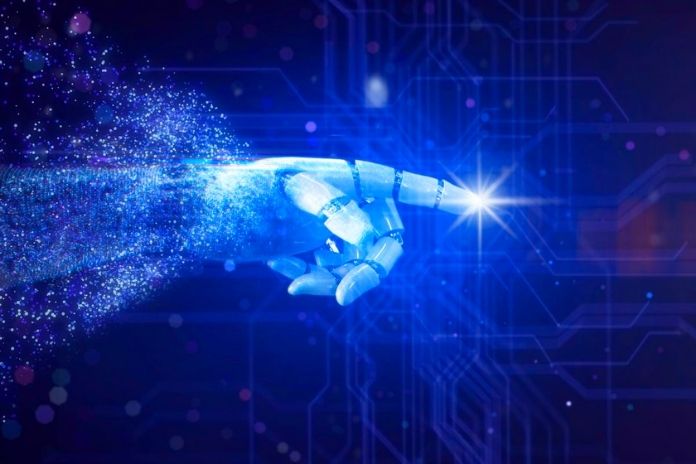Automation is changing the way people work. It also pushes the boundaries of how efficiency is defined. In a 2020 McKinsey global survey, two-thirds of executives confirmed investing more in automation or artificial intelligence (AI). While this indicates a significant change in companies, it also raises the question of employing people. With 1.3 million jobs that could be replaced by automation in Germany alone by 2025, according to a study by the Boston Consulting Group , many companies recognize the need to build a hybrid workforce.
Automation Of The Workplace
Machines have replaced human labor since the invention of the wheel in the 4th century BC. Technology can do physical work and mimic human intelligence in the modern digital age. While automation enables more efficient working methods, it is not yet a replacement for human intelligence. But it has shown how crucial human intervention can be. An example of this is the bias applied by the AI system to the AWS hiring process. Human intelligence has sophisticated dynamics such as intuition, emotion and sensitivity, while machines are logical and accurate. To develop further, we need a balanced mix of both. While chatbots can collect large amounts of data to generate insights, only the friendly tone of a customer representative can deliver them.
A Mix Of Human And Artificial Intelligence
During the pandemic, companies have primarily relied on automation and process redesign to reduce costs and mitigate risk. A new era of the man-machine paradigm has dawned. Closing skills gaps is the first step to ensure the smooth convergence of the hybrid workforce. A worldwide study by Deloitte shows that 68 percent of managers assume that their employees have moderate to extreme skill deficits, and another 27 percent have severe or significant skill deficits. It also means a tectonic shift in jobs, with demand for technological, social, emotional and higher cognitive skills coming to the fore.
Employees: Automated Processes To Counteract The Shortage Of Skilled Workers
Most European companies plan to address the shortage of skilled workers through retraining, education and training. In the US, companies are more likely to hire new employees. One approach to meeting this challenge consists of four pillars: retraining, new opportunities, hiring employees, and contracting for short-term support.
Retraining: Retraining employees will determine the success of the future workforce. Companies need to invest heavily in the education and training of their employees about new technologies and digital niche areas. This is the only way they will work in demanding areas.
New Opportunities: With a better-trained workforce, companies can better deploy their existing force based on their qualifications, skills and experience to meet new demands in emerging technology areas. This can be done, for example, by dividing the tasks of a specific workplace and then redesigning them in different ways. This includes adapting business processes or redeploying workers by matching companies’ skills and demands.
Recruitment: Widespread skill needs may outstrip the availability of skilled workers. AI can be used to speed up the onboarding process. These employees are selected according to the required skills by introducing intelligent matching criteria.
Contracting: Skills that are not part of the current portfolio are another way to meet staffing needs. Freelancers, gig workers, or other contractors quickly fill short-term staffing gaps.
The Human In The Center
Many narratives assume a dystopian future with job losses. But the widespread adoption of automation and artificial intelligence has created almost 97 million new jobs. By 2025, however, around 85 million jobs are expected to be lost due to the division of labor between humans and machines (Future of Jobs Report 2020 ). The first step is to upskill the workforce to close the digital skills gap. Continuous learning is necessary to fill these skill gaps and collaborate with intelligent systems.
Business leaders need to use the insights they gather in the workplace to make informed decisions. In this way, the loss of jobs due to automation can be avoided. Efficiencies can be achieved by using AI tools in areas where employees invest time without realizing significant business value. In addition, it is essential to create a new hybrid work culture within the organization, where technology and data are valued as tools for employees. They empower teams to thrive in unpredictable work environments. Companies are introducing cross-functional teams, bundling work, changing hiring processes – and thus initiating a change in mentality. You also use intelligence,
Researchers also use technology to expand human potential. MIT Lincoln Laboratory is working on technology to help workers manage their work-related stress. It does this by monitoring human performance using biomarkers. Automating assembly lines, for example, reduces the risk of fatigue and stress.
The pandemic has accelerated the pace of automation in the workplace. Therefore, it is essential to deploy a hybrid workforce to keep up with the new normal. Experts estimate that this trend could add another $15.7 trillion to the global economy by 2030. Companies need to focus on their human potential and find innovative ways to educate, educate, and rethink their workforce. The collaboration between humans and machines must be carefully designed to use the enormous potential of human intelligence and the agility of machines.
Also Read: Automation Is Not A Panacea For Destructive Processes

